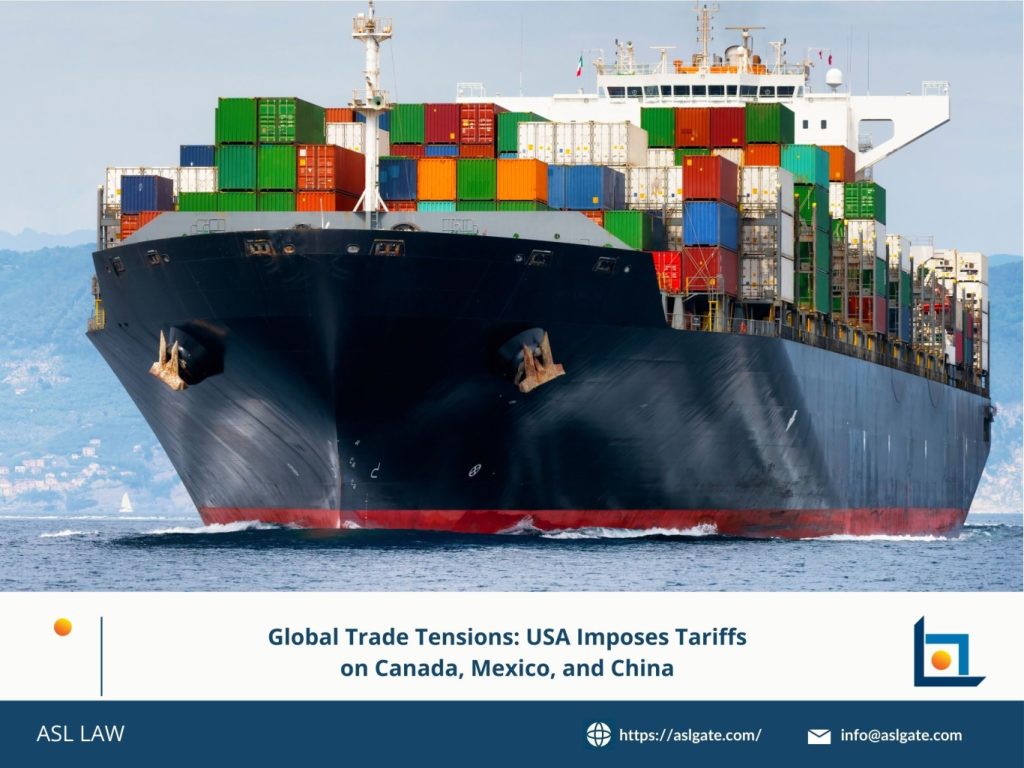As President Trump signed the tariff order on March 3, the USA has officially imposed 10-25% tariffs on imports from its top three trading partners, effective March 4, as per President Trump’s plan in the previous few weeks.
From midnight on March 4 (USA time), all goods from Mexico and Canada entering the USA are subject to new tariffs. Canadian energy faces a 10% tariff, while the same from Mexico is taxed at 25%. Other products from both countries also face a 25% tariff.
Chinese goods incur an additional 10% tariff, bringing the total additional duty to 20%.
Following the USA’s move, Canada and China responded with their own tariffs of 10-25% on American goods.
Canada imposed a 25% tariff on CAD 30 billion worth of USA imports, affecting 1,256 products, including food, beverages, consumer goods, and raw materials. An additional 25% tariff on CAD 125 billion worth of goods will take effect in 21 days. Ontario Premier Doug Ford also threatened to cut electricity exports to the USA.
China announced a 10-15% additional tariff on select USA products starting March 10, targeting agricultural goods, meat, seafood, and textiles. Additionally, 15 USA firms were placed on an export restriction list.
President Trump defended the tariffs, citing concerns over drug trafficking and stating that “there is nothing left to negotiate.” The USA’s top three trading partners—Canada, Mexico, and China—have responded strongly, signaling prolonged trade tensions ahead.
Mexico, Canada, and China are the top three trading partners of the United States. Specifically, trade volume between Canada and Washington reached over $2 billion per day in 2023. The USA is currently Canada’s largest trading partner, accounting for 76% of its exports and 64% of its imports.
Meanwhile, Mexico was the USA’s largest trading partner in 2023, with a trade volume of $807 billion. The country exports products such as crude oil, aluminum, and steel to the USA In return, it is a major consumer of American auto parts, semiconductors, and various agricultural products.
As for China, according to the country’s customs data, bilateral trade with the USA reached 4.898 trillion yuan ($668 billion) in 2024. However, the trade deficit between the two nations remains substantial, a longstanding concern for Washington. Last year, the deficit amounted to $361 billion.
Vietnamese businesses should be cautious of the ongoing global trade tensions, as they may lead to disruptions and uncertainties. However, these challenges also present a unique opportunity to expand across borders, positioning Vietnam as a viable alternative to traditional trade partners of the world’s four major economies.
By strengthening supply chains, diversifying markets, and enhancing competitiveness, Vietnamese enterprises can capitalize on shifting trade dynamics and secure a stronger foothold in the global economy.
To protect their legitimate interests, related manufacturers and exporters should familiarize themselves with the procedure and actively contact Vietnamese law firms specializing in anti-dumping and trade remedy for timely assistance.
ASL Law is a leading full-service and independent Vietnamese law firm made up of experienced and talented lawyers. ASL Law is ranked as the top tier Law Firm in Vietnam by Legal500, Asia Law, WTR, and Asia Business Law Journal. Based in both Hanoi and Ho Chi Minh City in Vietnam, the firm’s main purpose is to provide the most practical, efficient and lawful advice to its domestic and international clients. If we can be of assistance, please email to [email protected].
ASL LAW is the top-tier Vietnam law firm for Anti-dumping & countervailing. If you need any advice, please contact us for further information or collaboration.

 Tiếng Việt
Tiếng Việt 中文 (中国)
中文 (中国) 日本語
日本語

